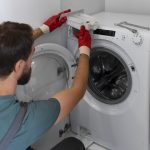Understanding Water Evaporation in UK Pools
Water evaporation significantly influences swimming pool retention, as it leads to noticeable reductions in water levels. In the UK, where the climate is characterized by varying temperatures and humidity levels, evaporation is a constant concern for pool owners. Factors such as air temperature, humidity, and wind speed all play crucial roles in determining evaporation rates. When warm air and low humidity conditions prevail, water evaporates more rapidly, requiring pool owners to top up their pools frequently, which can be both costly and inconvenient.
Addressing evaporation is vital not just for maintaining the ideal water level but also for pool maintenance efficiency and cost-efficiency. When water levels drop due to evaporation, the chemical balance in the pool can be disrupted, leading to potential issues with water quality. Moreover, ensuring correct water levels helps maintain the integrity of pool systems, such as filters and pumps, which require a certain amount of water to function optimally.
Also to discover : Key design features for crafting the ideal infinity pool at your seaside uk residence
Therefore, understanding the interplay between the UK climate and water evaporation is crucial for effective pool management. Implementing measures to mitigate evaporation, such as using pool covers or wind barriers, can lead to significant reductions in water loss and help maintain a healthy, well-balanced pool. By being proactive about addressing water evaporation, pool owners can achieve better water retention and sustainability.
Importance of Wind Barriers for Water Retention
Wind barriers play a pivotal role in enhancing pool water retention by significantly reducing the evaporation rates caused by the UK’s characteristic breezy conditions. When wind traverses the surface of a pool, it increases the rate of evaporation by removing the warm, humid air that hovers above the water, allowing cooler, drier air to take its place. This natural process accelerates the loss of water, making it imperative for pool owners to address wind exposure effectively.
In the same genre : Revamp your uk backyard pool into a serene oasis with inspiring landscaping ideas
Implementing wind barriers, such as fences, privacy screens, or natural hedges, can provide substantial benefits. These barriers act as a shield, creating a buffer zone that diminishes the wind speed at the water’s surface, thereby curbing the frequency of evaporation. Besides mitigating water loss, wind barriers contribute to the overall aesthetics of a pool area, offering privacy and enhancing the comfort of the pool environment.
When comparing wind barriers to other evaporation solutions, such as pool covers, it’s essential to note their unique advantages. While covers are highly effective when the pool is not in use, wind barriers afford protection continually, allowing for uninterrupted enjoyment of the pool throughout the day. Thus, the strategic placement and selection of wind barriers can lead to more sustainable and less costly pool maintenance solutions.
Top Wind Barriers for Enhancing Pool Water Retention
Using effective wind barriers is a crucial strategy for reducing evaporation and enhancing pool water retention. Different barriers provide unique benefits, making it essential to understand their characteristics for optimal performance.
Barrier Type 1: Privacy Screens
Privacy screens offer a versatile solution for blocking wind. They are typically made from durable materials and can be installed easily around pool areas. These screens not only provide an immediate reduction in wind exposure but also contribute to the aesthetic appeal of the pool. To ensure maximum effectiveness, it’s best to install them where winds frequently blow across the water. Users have reported significant improvements in water retention after deploying privacy screens, citing less frequent need for water topping.
Barrier Type 2: Pool Fencing
Pool fencing serves a dual purpose: enhancing safety and acting as a formidable wind barrier. A well-designed fence minimizes evaporative loss by deflecting wind currents. Key design elements include height and material density, which help reduce wind speed at the pool surface. Some cases have demonstrated a 20% reduction in water evaporation with strategic fencing installations, showcasing their efficacy in managing water loss.
Barrier Type 3: Windbreak Plants
Natural windbreak plants such as shrubs and hedges can form an eco-friendly barrier around pools. Selecting native plant species ensures low maintenance while promoting biodiversity. These plants not only act as a wind shield but also add to the environmental benefits, improving air quality and providing habitat for wildlife. Regular pruning is necessary to maintain plant effectiveness, but the long-term benefits make them a sustainable option for pool owners.
Barrier Type 4: Custom Windbreaks
For a bespoke approach, custom windbreaks can be tailored precisely to your pool’s requirements. Options include wooden panels, glass screens, and even metal structures, each offering distinct levels of wind resistance. Consideration of materials and design can yield significant return on investment through water savings. Although the initial cost may be higher, the reduction in evaporation compensates for installation expenses over time, making custom windbreaks a viable long-term solution.
Additional Techniques for Reducing Evaporation
Beyond wind barriers, there are several effective techniques to curb evaporation and enhance swimming pool retention. These methods can significantly contribute to water conservation and cost savings for pool owners.
Use of Covers
Pool covers are perhaps the most straightforward and effective measure for reducing evaporation. By simply covering the pool when not in use, evaporation can be reduced by up to 95%. This acts as a physical barrier, preventing warm air and water from escaping into the atmosphere. Pool covers also have the added benefit of keeping debris out and maintaining a more stable water temperature.
Utilizing Surface Skimmers
Surface skimmers can aid in minimizing evaporation as well. By efficiently clearing debris from the water’s surface, they enhance water circulation, which helps in retaining water by reducing surface tension. Regular use of skimmers ensures that the pool operates at optimal efficiency, aiding in better water retention and reduction of water loss through evaporation.
Adjusting Water Chemistry
Properly maintaining the pool’s chemical balance also plays a role in minimizing evaporation. When water chemistry is optimized, the rate of evaporation can decrease due to reduced water agitation and foaming. Water conservation is improved when the chemical state is stable, necessitating less frequent refilling. Pool owners are thus advised to regularly test and adjust the water’s chemical levels to maintain ideal conditions for both swimmers and water retention.
These complementary evaporation techniques can collectively lead to significant long-term benefits for pool maintenance.
Statistical Insights on Pool Water Evaporation
Understanding pool evaporation statistics is essential for effective management and water conservation. In the UK, average evaporation rates can vary significantly depending on the local climate and specific pool conditions. On average, pools may lose approximately 1 inch (2.5 cm) of water per week due to evaporation alone, influenced by seasonal changes and pool location. During hotter and windier months, evaporation rates tend to peak, necessitating increased attention from pool owners.
Comparative statistical data on different wind barriers reveal their critical role in mitigating water loss. For instance, pools equipped with privacy screens can experience up to a 30% reduction in evaporation during the summer. Similarly, custom-built windbreaks using dense materials may achieve even higher efficiency, potentially reducing evaporation by up to 40%. Such impressive data underscore the importance of strategically selecting wind barriers tailored to specific pool environments.
Additionally, seasonal variations greatly impact evaporation dynamics. The transition from winter to summer in the UK often sees an upsurge in swimming pool water evaporation, prompting timely adjustments in water retention strategies. Pool owners are thus encouraged to employ a combination of techniques tailored to their specific pools, using statistical insights to guide effective decision-making.
Visual Aids and Diagrams for Better Understanding
Effective communication of evaporation reduction strategies in pools can benefit greatly from visual aids. These tools help simplify complex concepts, making it easier to grasp the relationship between elements such as wind barriers and pool water retention. By using diagrams and visuals, both prospective pool owners and seasoned maintenance personnel can better comprehend how to optimize water retention efforts.
Types of Diagrams: Integrating pool diagrams into discussions about wind barriers and water evaporation is crucial. Diagrams that showcase the setup and positioning of barriers—such as privacy screens, pool fencing, windbreak plants, and custom windbreaks—can effectively illustrate how these elements work to reduce evaporation. Such visuals help highlight the strategic placement needed to achieve optimal performance.
Before-and-After Scenarios: Presenting before-and-after images of pool areas with and without wind barriers provides a tangible representation of effectiveness. These visuals can depict the changes in evaporation rates and water retention observed after barrier implementation. Highlighting real-world examples further strengthens understanding and showcases the practical benefits of utilizing these solutions.
Overall, the thoughtful use of visual aids and diagrams is an indispensable tool in conveying the significant impact of wind barriers and other techniques on pool water retention. Through clear and descriptive imagery, pool owners are able to make informed decisions based on a practical and digestible understanding of their options.
User Experiences and Case Studies
The effectiveness of various wind barriers and evaporation solutions for enhancing pool water retention can be best understood through diverse user experiences and documented case studies. Pool owners have consistently reported enhanced water retention after implementing these solutions, with particular emphasis on the adaptability and benefits each barrier type provides.
Several pool owners, for instance, have praised privacy screens for simultaneously enhancing privacy and reducing wind impact, resulting in noticeable reductions in the need for water top-ups. Privacy screens have been particularly effective in windy regions, where users noticed a decline in evaporation rates by creating a sheltered pool environment.
Case studies further highlight the success of pool fencing as a dual-purpose solution, addressing both safety concerns and evaporation. One study demonstrated a 20% reduction in water loss, attributing this to strategic use of dense materials and optimal fence height. This showcases how design intricacies significantly influence the evaporation rate.
Feedback regarding windbreak plants underscores their multifunctional role. Users appreciate their natural aesthetic and environmental benefits, such as promoting local biodiversity while reducing water loss. Regular maintenance, like pruning, was noted as essential for optimal performance.
Lastly, custom windbreaks offer a tailored solution to specific pool layouts. One example showed a 30% reduction in evaporation when pools were equipped with custom barriers. Users found that while the initial investment cost was significant, the subsequent savings in water conservation and maintenance justified the expenditure.
These experiences and studies clearly illustrate the tangible benefits wind barriers offer, allowing pool owners to make informed choices that suit their environmental and personal preferences.






